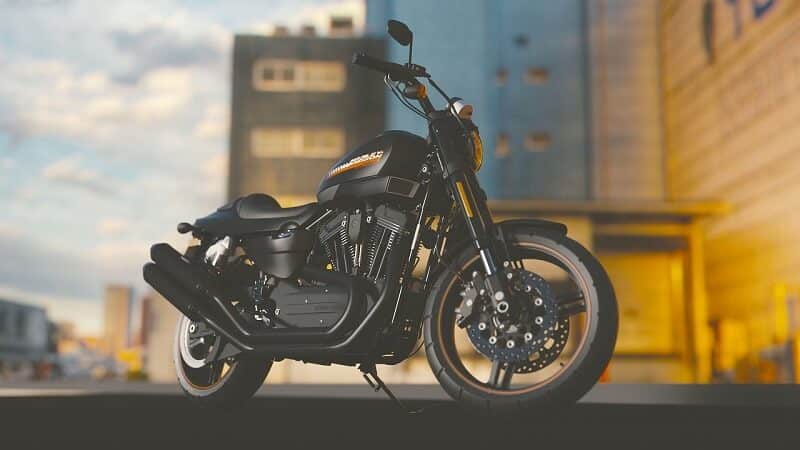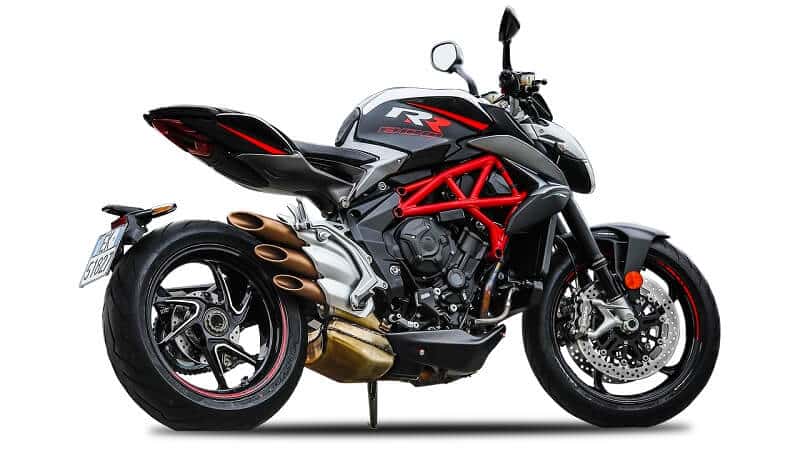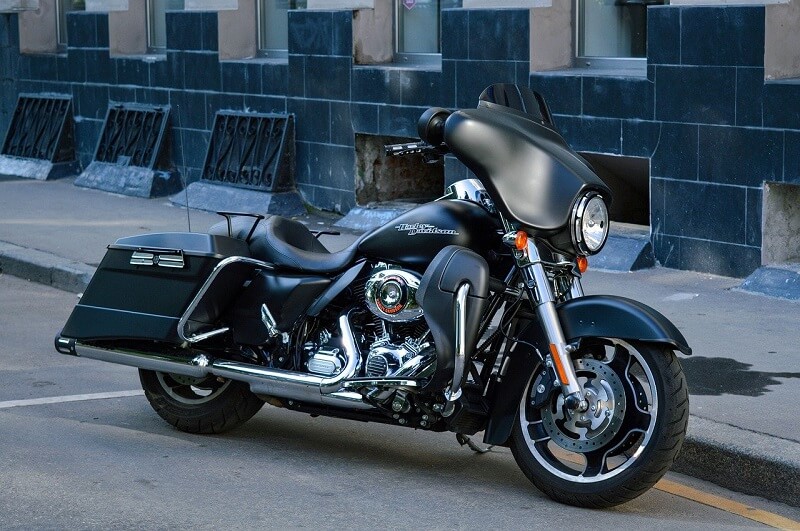How much does a motorcycle weigh? is the equivalent of asking how long is a piece of string? There is a multitude of factors that are likely to influence the answer. Regardless of the weight of the motorcycle, a degree of strength is necessary to ride a motorcycle successfully. Most people, after being trained and having practiced the basic skills associated with riding a motorbike, should have few difficulties. That said, if you’re someone who struggles with the weight of a wet towel, and given the current price of gas, it may be prudent to invest in a bus pass.
Average Motorcycle Weights

How much does a motorcycle weigh? The average motorcycle weighs between 400 and 500 pounds or 180 to 225 kilograms. This varies significantly based on the type of bike. These are the average motorcycle weights based on the type of bike. The average has been calculated from a selection of bikes in each class and manufacturer: It should also be noted that the averages are based on the dry weight of the motorbikes:
| Adventure bike | 550 lbs | 250 kgs |
| Cafe racer | 400 lbs | 200 kgs |
| Chopper | 700 lbs | 315 kgs |
| Cruiser | 550 lbs | 250 kgs |
| Dirt bike | 220 lbs | 100 kgs |
| Sports bike | 400 lbs | 180 kgs |
| Touring bike | 900 lbs | 400 kgs |
Why Does Weight Matter?
Aside from the obvious, you look pretty stupid if you drop your bike and can’t get it back up again, there are significant advantages to a smaller bike. Fuel efficiency is one excellent reason, and with prices hitting over $5 a gallon, who would pass up the opportunity to save a few bucks?
Other advantages that come with a lighter bike include the ride being a lot smoother, better acceleration, faster steering response, and improved braking performance.
Factors Contributing to Motorcycle Weight

Factors that play a role in the weight of a motorcycle include:
Engine Size
The bigger the engine, the bigger the motorcycle, and the heavier it is likely to be. Without a doubt, the best indicator of weight is the cc rating of your engine. This means those bikes with a high cc rating tend to weigh more.
These are the average weights based on cc rating. Note that this list does not include Harley Davidson motorcycles, which are some of the heaviest on the market. It primarily relates to sports bikes.
| 250 cc | 350 lbs | 160 kgs |
| 300 cc | 350 lbs | 160 kgs |
| 500 cc | 410 lbs | 185 kgs |
| 600 cc | 400 – 450 lbs | 180 – 205 kgs |
| 900 cc | 430 lbs | 195 kgs |
| 1100 cc | 450 – 500 lbs | 205 – 225 kgs |
| 1200 cc | 500 – 600 lbs | 225 – 275 kgs |
| 1300 cc | 500 – 650 lbs | 225 – 295 kgs |
Intended Use
There is a wide range of different motorcycles, each with a different purpose, which means the features, materials, and way they are built varies. This impacts their weight. A sports bike, for example, is built with a focus on horsepower and speed, so tends to be a bit lighter than a touring bike that is built for long distances, often with a passenger and luggage. A bike will also come in on the light side, usually under 300 pounds, as it lacks many of the extras that would be prone to get knocked off.
On board Accessories
Extras tend to add weight to a bike. These include things like windshields and fairings, for example. Of course, the extra weight that they add depends to a large degree on the material used to manufacture them.
How To Tell If Your Motorcycle Is Too Heavy
There are several signs to look out for that might suggest your motorcycle is too heavy, including:
-
Sparks When You Turn
Assure sign that your bike is overweight is when you see small sparks between it and the road when you turn. This generally suggests excessive pressure or load is being placed on the tires.
-
Falls Over a Lot
If your motorcycle falls over frequently when you put it down, this suggests it’s a little on the heavy side. Your bike should be steady when you put it down. When it falls over, if it sustains damage, this adds to the likelihood it is too heavy, especially if there is significant damage.
-
Discomfort When Riding
When you are riding, and it feels uncomfortable, or you are experiencing discomfort, this might mean your motorcycle is too heavy. This could mean that you find it difficult to ride or that when you are pushing it to turn it or move it, you are struggling a little.
Heaviest And Lightest Production Motorbikes
Just in case it’s a question at the local pub quiz next week, the heaviest production bikes currently on the market, weighing in at over 900 pounds are:
- Harley Davidson CVO Road Glide Ultra
- Honda Goldwing
- Kawasaki VN1700 Voyager
- Indian Roadmaster
While the lightest production bikes currently on the market, weighing in at under 300 pounds, are:
- KTM 690 SMC-R
- Kawasaki KLX250
- KTM Duke 390
- Honda CRF250L/M
This does not include dirt bikes, which are notably lighter.
Ways To Make Your Bike Lighter
There are several tactics that can be employed to make your motorcycle lighter, including:
-
Change The Battery
Battery technology has changed markedly in the last decade or so. If you’re still relying on a lead acid battery, switch it out for a lithium-ion one. The weight lose is noticeable, with lithium-ion batteries weighing around a third of their older counterparts.
-
Lose The Extras
Unfortunately, while many of the extras on motorcycles are useful, they add weight to the bike. If you want to cut down the weight of your bike, one of the easiest and quickest ways is to use the extras, such as saddlebags, which depending on what they are made of and what’s in them can make a big difference to the weight of the bike.
-
Choose Performance Parts
Switching out your motorcycle’s stock parts for performance parts can decrease the weight of your bike. Not only that, but your bike will look a lot cooler. The downside is performance parts cost money, so this isn’t an option for everyone. Common performance parts to consider include the steel sprocket and exhaust.
-
Carry Less Fuel
One option to reduce the weight of your motorcycle is to carry less fuel. This is a good option if you are only riding short distances and can get away with only half filling the tank, especially as a full fuel tank can add up to 20 pounds to the weight.
-
Change The Wheels and Rims
Opting for a lighter wheel can help to reduce the weight of the bike and make a significant dent in the total weight. Choosing rims that aren’t made of heavy metal can reduce the weight even further.
-
Restyle The Fenders
The fenders on a motorbike can contribute a decent amount of weight. Removing them or restyling them and making them shorter or narrower can reduce the total weight of the bike.
At the end of the day, the ideal weight for a motorcycle depends very much on the individual rider and what they feel comfortable riding. Beginners and those new to motorcycles will find it easier to master the skills of riding on a lighter bike. Heavier motorcycles while being a more stable ride are generally less comfortable, harder to control, and slower.
You can find some tips for the right motorcycle for your personal weight, pillion, and luggage requirements
Information for this article was partially sourced and researched from the following authoritative Government, educational, corporate, and nonprofit organizations:
Approved motorcycles for learners and provisional riders
About the author:
Michael Parrotte was the Vice President of AGV Helmets America, and a consultant for KBC Helmets, Vemar Helmets, Suomy Helmets, Marushin Helmets, KYT Helmets, and Sparx Helmets. In addition, he is the founder and owner of AGV Sports Group.
Click here for all of Michael’s contact and Social Media information https://parrotte.com/
Click here for all AGV Sports Group Social Media information http://agvsport.info/
FM/L

